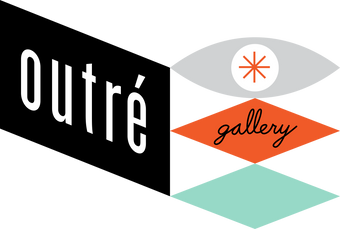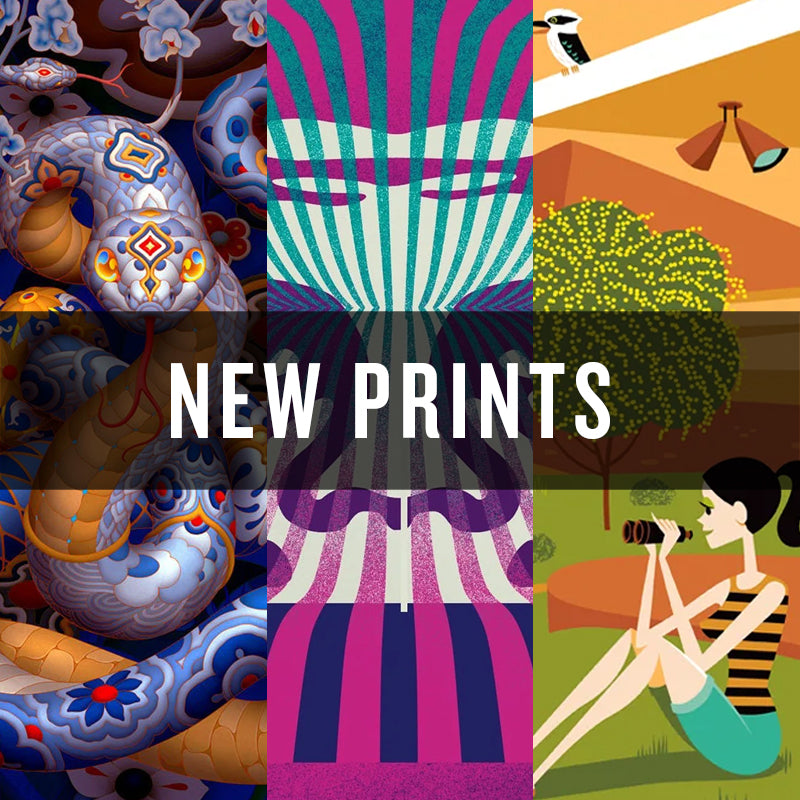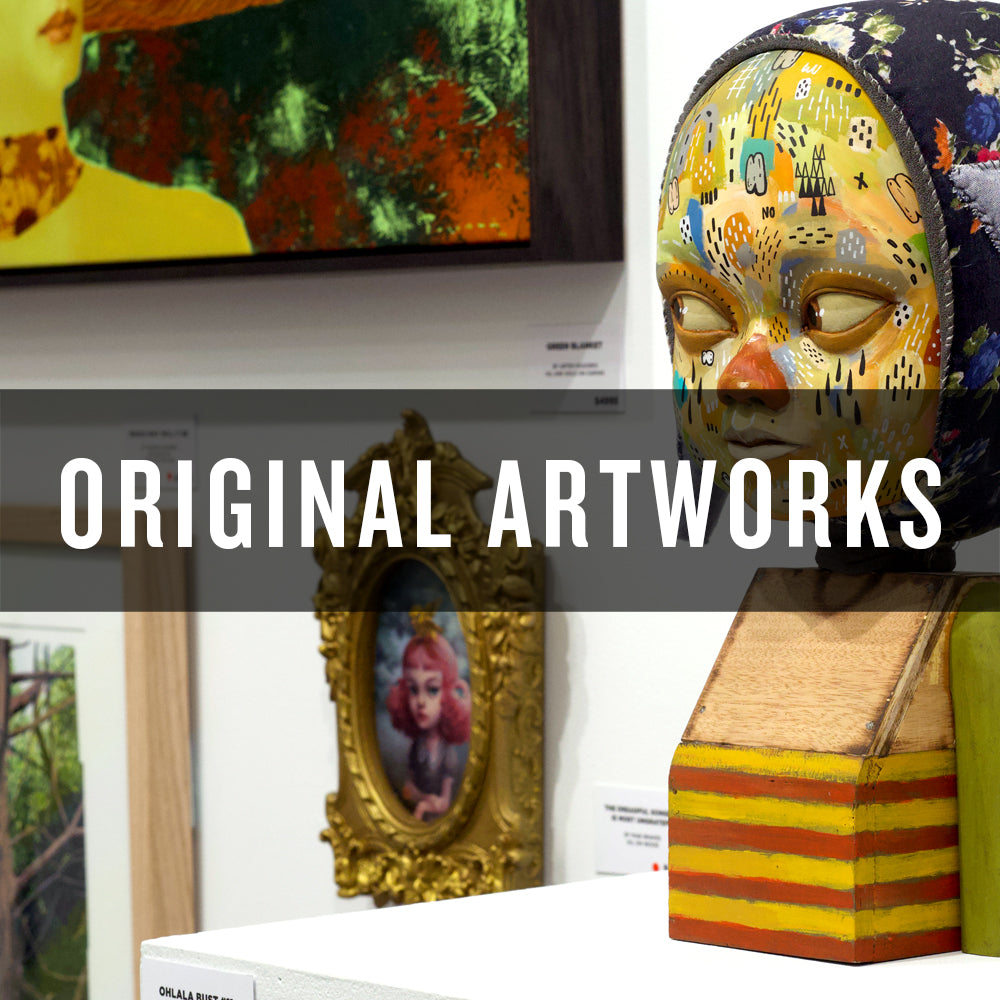
Peter Bakacs is a painter based in Ocean Grove who has a love for mid century design and vintage cars. Peter is premiering 'The Fast Can’t Lose', at Outré Gallery on October 6th. It will be a series of bright, acrylic paintings depicting a mix of characters, auto parts and cars. This series draws on a more abstract and experimental side to Peters painting methods as compared to his strictly figurative and illustrative style of past works.
We spoke to Peter in the lead up to his show to ask him about his latest work, his fascination with 60s & 70s cars and his love for mid century design.
When did you start to create art, how did it all begin?
It all started in the late 90’s with a comic book I created called Dragtown , about four 20 year old guys living in a small country town, playing music and getting up to all sorts of mischief, it lasted two issues and was a fun project. From there I started messing around with gouache, painting the characters from that comic, then moving onto acrylics and trying to explore a style.
How would you describe your work to someone if they hadn’t seen it?
Mid-Century Pop illustrative. Bright colours, toon characters and clean lines.
Your work is colourful, minimal and features sharp lines and edges, who and what were your influences that moulded and developed your style?
Early on I was influenced by artists I saw in Juxtapoz Magazine, that really opened up my perspective of what art could be. There were artists out there doing things a little differently, Frank Kozik definitely comes to mind. At that time I was doing animation at RMIT where I revisited childhood heroes like Chuck Jones and Jay Ward among others. I started watching a lot of Looney Toons, rediscovering Ed Roth, who still to this day is probably why I paint, he was amazing, a real innovator. The sharp lines probably come from my love of graphic design and modernist architecture.

On your Instagram, vintage cars feature heavily - where does your love of cars come from and does it translate into your work at all?
From an early age I’ve always been fascinated by cars, mostly from the 60’ and 70’s. I’ve even been lucky enough to own a few, Chryslers mostly. The car influence definitely comes from my Dad who was a bit of a hoon in his early years, he and my uncle would race Fiats and Alfa Romeos around Fisherman’s Bend in Port Melbourne. The cars from that era were exciting, colourful, loud and fast. What’s not to love?
The characters you create are quite square, devoid of any curved features, where have these characters come from - is there a specific movement which influenced their individual shape?
Mostly from 50’s and 60’s cartoons, movies and illustration, shows like Rocky and Bullwinkle, films like Blake Edwards’ The Great Race. All these childhood favourites and their more angular graphic style have defiantly stuck with me through the years. I also love Jeffrey Smart and John Brack.

Your wife runs Modernist Australia, do you also have a love for Mid-Century design?
We both share a love of Mid-Century architecture, I love the minimalism, straight lines, everything was designed for a purpose. I’m also a sucker for graphic and industrial design from that era.
Has your love for Mid-Century influenced the distinct colour palette you work with?
Early on for sure. I remember the first time I went to the Rose Seidler House in Sydney and just adoring the mural Harry Seidler painted just outside the kitchen. I often struggle with colour, it’s something that I’m working on and experimenting with more.

For your paintings, what mediums do you work with, and how does a typical painting happen from start to finish?
I usually start with a quick sketch or a written idea, from there I develop the sketch further, tracing and refining with pencil. I try and limit my palette, maybe using 3 to 4 colours. I then run my illustration through Adobe illustrator to experiment with colour, this gives me an idea of how the painting will look on completion, years ago I considered this cheating, but I like to think of the computer as another tool that contributes to the process. I then paint with acrylics on to wood panel. I’m usually working on two or three paintings at a time, some I leave 80% done and come back to them weeks later. I’m pretty slow, so they do take a while to complete, but it’s the process that give me the most satisfaction.
When creating a work, do you come at it from an aesthetic perspective or do you seek to explore themes in your work?
There has always been an undercurrent of “Kustom Kulture” to my work, if you can call it that. I started out painting for myself, stuff I’d like to hang on my walls, which I still do. I’ve never thought about my work having any intentional meaning, so I lean more towards aesthetics.

Could you speak about the idea behind your upcoming show at Outré Gallery and what will it be called?
For this show I’ve decided to explore my elemental subject of automobiles, motorcycles, and the people who ride and drive them. So you’ll get a mix of characters, auto parts and cars. It will be called The Fast Can’t Lose.
Are you exploring a particular concept within this body of work?
I’m currently at a crossroads with where I’m headed with my work, I’m slowly moving away from strictly figurative and illustrative style into something more abstract and experimental. The work in this show will display the move in that direction, so a bit of both, which hopefully makes it interesting.
Is there a specific work you could tell us a bit more about which will be featured in this show?
Lately I’ve been exploring racing graphics. I love the sponsor logos, how they were placed on the car exteriors, especially the Super Stock Drag Racing era of the 1960’s. With these as a starting point, I have cropped and focused ever closer, resulting in 4 finished pieces, abstracted colour works, rather than figurative works.


